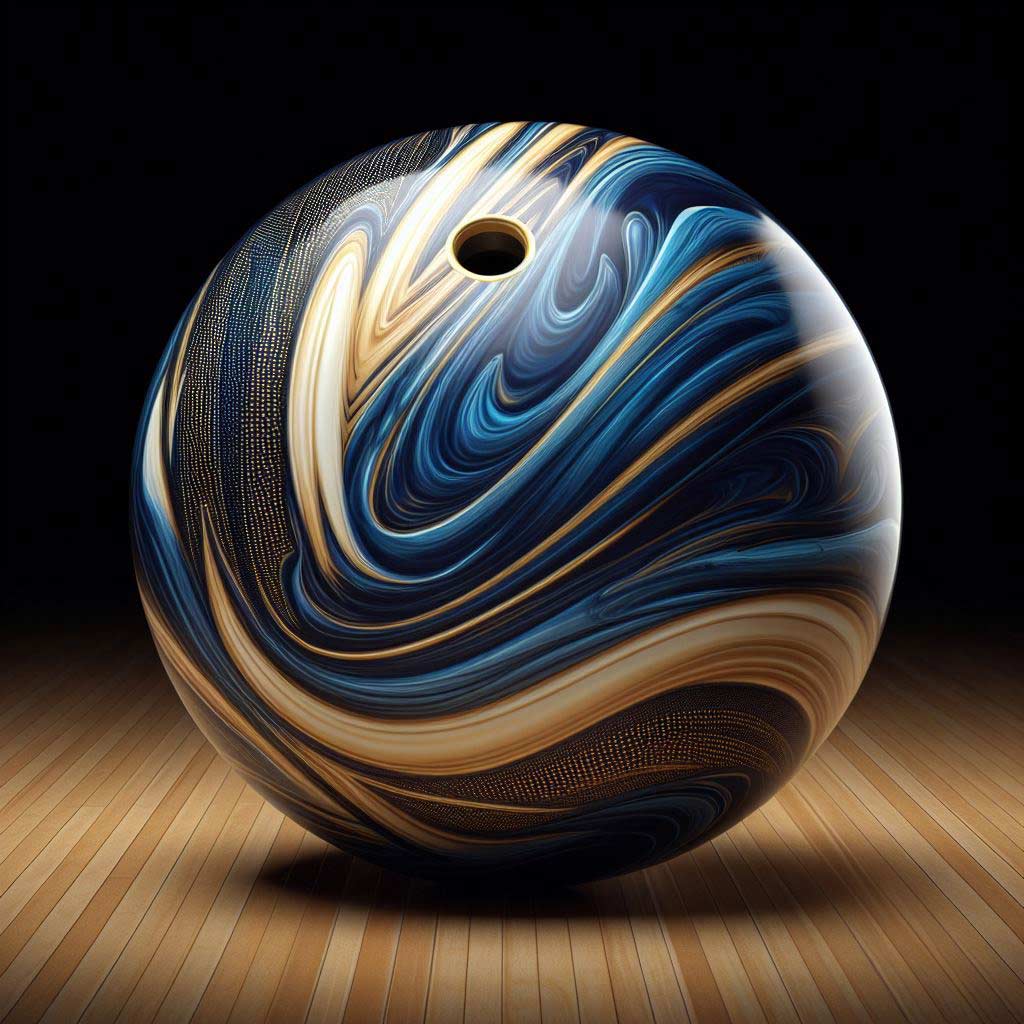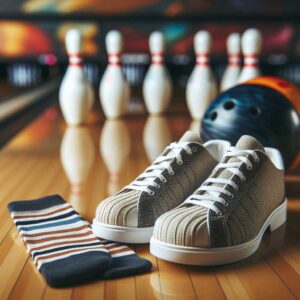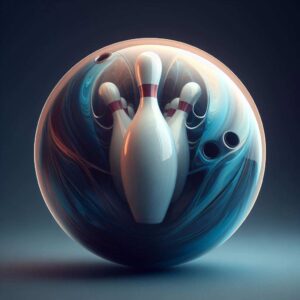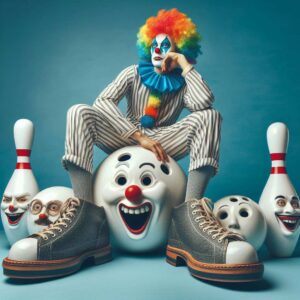Bowling is a beloved sport enjoyed by millions worldwide, from casual players to competitive league bowlers. While it may seem simple on the surface, those who take bowling seriously understand the importance of having the right equipment, particularly the bowling ball.
For those seeking optimal performance and fit, custom bowling balls offer a tailored solution. However, these specialized pieces of equipment come with a price tag that can vary significantly.
In this comprehensive guide, we’ll dive deep into the world of custom bowling balls, exploring the factors that influence their cost, average price ranges, additional expenses to consider, and tips for making an informed purchase decision.
Whether you’re a seasoned bowler looking to upgrade your arsenal or a beginner considering your first custom ball, this guide will equip you with the knowledge to navigate the market and find the perfect ball within your budget.
What Are Custom Bowling Balls?
Custom bowling balls are not your average “off-the-rack” models found in pro shops or bowling alleys. These specialized balls are designed and crafted to meet the specific needs and preferences of individual bowlers.
Unlike mass-produced balls, custom balls allow for precise customizations in weight, fit, core type, coverstock material, and even engravings or logos.
The primary benefit of a custom bowling ball is its ability to enhance your performance on the lanes. By tailoring the ball’s specifications to your unique bowling style, release, and desired ball motion, a custom ball can help you achieve more consistent strikes, improve entry angle, and potentially increase your scoring potential.
Factors Affecting Custom Ball Pricing
When it comes to custom bowling balls, there are several key factors that influence their cost. Understanding these elements is crucial in determining your budget and selecting the right ball for your needs and skill level.
-
Core Type
The core is the heart of a bowling ball, responsible for its overall weight distribution and motion dynamics. There are three main types of cores:
- Pancake core: A flat, disc-shaped core that provides a more aggressive backend motion and increased entry angle.
- Symmetric core: A spherical core with equal weight distribution, offering a predictable and controllable ball motion.
- Asymmetric core: An elliptical or off-center core that creates an uneven weight distribution, resulting in more exaggerated and angular ball motion.
Generally, asymmetric cores are more expensive due to their advanced engineering and performance characteristics, while pancake and symmetric cores are more affordable.
-
Coverstock Material
The coverstock is the outer shell of the bowling ball, and its composition plays a significant role in determining the ball’s traction, backend motion, and overall reaction on the lane. Common coverstock materials include:
- Solid Reactive: This durable material offers a strong backend motion and is often preferred by bowlers seeking aggressive hook potential.
- Pearl Reactive: Pearl coverstocks are known for their earlier and smoother midlane reaction, making them a popular choice for bowlers with higher rev rates or on drier lane conditions.
- Plastic/Polyester: These coverstocks are typically less expensive and provide a straighter ball motion, making them ideal for spare shooting or use on very dry lanes.
Reactive resin coverstocks, both solid and pearl, tend to be more expensive due to their advanced technology and performance capabilities.
-
Customizations
One of the key advantages of custom bowling balls is the ability to tailor various aspects to your specific needs and preferences. These customizations can include:
- Layout: The layout refers to the positioning of the finger holes and their relationship to the core, which can significantly impact the ball’s overall motion and performance.
- Grip: Custom grips can be shaped and textured to provide a comfortable and secure fit for your fingers, improving control and release consistency.
- Engravings: Many bowlers choose to personalize their custom balls with engraved names, logos, or designs, adding a touch of individuality and style.
The more extensive the customizations, the higher the potential cost of the ball.
-
Brand and Quality
Like any specialized sporting equipment, bowling ball brands vary in reputation, quality, and pricing. Well-established, premium brands like Storm, Roto Grip, and Motiv often command higher prices due to their advanced engineering, proprietary technologies, and reputation for performance and durability.
Meanwhile, lesser-known or entry-level brands may offer more affordable options, though potentially with some trade-offs in terms of quality or longevity.
Average Price Ranges
With the various factors mentioned above, the cost of custom bowling balls can span a wide range. Here are some general price ranges to consider:
- Entry-level: $100 – $200 At this price point, you’ll typically find plastic/polyester balls or lower-end reactive resin models from less prominent brands. These balls are often suitable for beginners or those on a tight budget.
- Mid-range: $150 – $250 This range encompasses many popular reactive resin balls from well-known brands. You’ll have access to a variety of core types, coverstocks, and customization options, providing a good balance of performance and value.
- High-end: $200 – $300+ Premium custom balls from top brands like Storm, Roto Grip, and Motiv fall into this higher price bracket. These balls feature advanced core designs, premium reactive coverstocks, and extensive customization options, catering to the needs of competitive bowlers and those seeking the highest level of performance.
It’s important to note that these ranges are approximate, and pricing can vary based on factors like availability, special editions, or limited releases.
Additional Costs to Consider
While the cost of the custom bowling ball itself is the primary expense, there are several additional costs to factor into your overall budget:
-
Drilling and Fitting Fees
Professional drilling and fitting services are essential to ensure your custom ball is properly drilled, laid out, and customized to your specifications. Most pro shops charge a fee for these services, typically ranging from $30 to $70 or more, depending on the complexity of the customizations.
-
Resurfacing and Maintenance Costs
Over time, the coverstock of your bowling ball will become dull, affecting its performance and reaction on the lanes. Regular resurfacing, which involves sanding or polishing the ball’s surface, is recommended to maintain optimal performance. Pro shops often charge between $5 and $15 for basic resurfacing services.
-
Bowling Accessories
While not directly related to the custom ball itself, bowling accessories like bags, shoes, and wrist supports can add to your overall equipment costs. High-quality bowling bags, for instance, can range from $50 to over $200, depending on features and brand.
Buying New vs. Used Custom Bowling Balls
For bowlers on a tight budget, purchasing a used custom bowling ball can be a cost-effective alternative to buying new. While pre-owned balls may show some wear, they can still offer excellent performance at a fraction of the cost.
Pros of Buying Used:
- Significant cost savings compared to new balls
- Ability to find discontinued or hard-to-find models
- Reduced depreciation since the initial owner has already absorbed the bulk of the value loss
Cons of Buying Used:
- Potential for surface damage, gouges, or cracks
- Uncertainty about the ball’s history and maintenance
- Limited customization options since the ball has already been drilled and laid out
When purchasing a used custom ball, it’s important to inspect it thoroughly for any major flaws or damage. Many pro shops and online retailers offer used ball sections where you can find well-maintained, pre-owned models at discounted prices.
Budgeting Tips for Custom Bowling Balls
Investing in a custom bowling ball can be a significant expense, but with careful planning and budgeting, you can find a high-quality ball that meets your needs without breaking the bank. Here are some helpful tips to keep in mind:
- Only Buy What You Truly Need – Before making a purchase, take an honest assessment of your skill level and bowling goals. If you’re a casual bowler or just starting out, an entry-level or mid-range ball may be sufficient, allowing you to allocate more funds for accessories or coaching.
- Ask About Product Samples or “Remars” – Many bowling ball manufacturers offer product samples or “remars” (short for “remanufactured”) at discounted prices. These balls may have minor cosmetic flaws or be overruns from previous production runs, but they can offer significant savings while still providing excellent performance.
- Look for Discounts and Sales – Like many industries, bowling ball manufacturers and pro shops often offer seasonal sales, clearance events, or promotional discounts. Timing your purchase wisely can help you save money on your custom ball.
- Join Bowling Associations or Clubs – Becoming a member of local or national bowling associations or clubs can provide access to exclusive discounts, pro shop deals, and other benefits that can help offset the cost of your custom bowling ball.
- Consider Used or Last Year’s Models – If you’re open to purchasing a slightly older model, you can often find significant savings on used or previous year’s custom bowling balls. While they may not have the latest features, these balls can still deliver excellent performance at a more affordable price point. Many pro shops and online retailers offer clearance sections featuring last year’s models at discounted rates, allowing you to access premium balls without paying full price for the latest release.
How to Choose the Right Custom Ball
With so many options available, selecting the perfect custom bowling ball can be a daunting task. However, by understanding your bowling style, preferences, and working closely with professionals, you can ensure you make an informed decision that maximizes your investment.
Getting Fitted and Understanding Ball Motion Preferences
The first step in choosing a custom ball is to get properly fitted by a professional. During this process, they’ll assess factors like your grip size, span (the distance between your thumb and fingers), and overall hand size to determine the ideal weight, layout, and grip specifications for your new ball.
Additionally, it’s essential to understand your ball motion preferences. Do you prefer an aggressive backend hook or a more controlled, smooth motion? Are you a higher rev-rate bowler or someone with a straighter release? Your ball motion preferences will help guide the selection of the appropriate core type and coverstock material to complement your bowling style.
When to Upgrade or Expand Your Arsenal
For seasoned bowlers, the decision to purchase a new custom ball often comes down to expanding their arsenal or addressing changing lane conditions. As you progress in the sport, you’ll likely find that different ball configurations excel in various lane environments or oil patterns.
Upgrading to a new custom ball can help you stay competitive and adapt to changing conditions, whether that means adding a more aggressive ball for heavy oil or a smoother, earlier-rolling option for drier lanes. Consulting with a pro shop professional or experienced coach can help you determine when it’s time to invest in a new ball to round out your arsenal.
Working with a Pro Shop vs. Online Ordering
When it comes to acquiring a custom bowling ball, you have two primary options: working with a local pro shop or ordering online.
Local Pro Shops:
- Personalized service and expert fittings
- Ability to physically test and feel different ball options
- Ongoing support and maintenance services
- Often offer used ball selections and trade-in programs
Online Ordering:
- Potentially wider selection and access to harder-to-find models
- Convenience of shopping from home
- May offer competitive pricing and deals
- Limited ability to physically inspect or test the ball before purchase
For many bowlers, especially those new to the custom ball experience, working with a local pro shop can be invaluable. The personalized attention, expertise, and ongoing support provided by pro shop professionals can ensure you make the right choice and get the most out of your investment.
However, for those with a deep understanding of their preferences or seeking specific models, online ordering can be a viable option, particularly if you’re comfortable with the potential limitations.
Wrapping Up
As you can see, the cost of custom bowling balls can vary significantly, ranging from entry-level models in the $100-$200 range to high-end, premium balls exceeding $300. Factors like core type, coverstock material, customizations, and brand reputation all play a role in determining the final price tag.
However, it’s important to remember that a custom bowling ball is an investment in your performance and enjoyment of the sport. By carefully considering your needs, budget, and long-term goals, you can find a ball that not only fits your playing style but also provides excellent value for your money.
Remember, the process of selecting a custom ball shouldn’t be taken lightly. Work closely with pro shop professionals, seek guidance from experienced bowlers, and take the time to understand the nuances of ball motion and construction. With the right approach, you can make an informed decision that will have you rolling strikes and improving your game for years to come.
So, whether you’re a competitive league bowler or a casual player looking to take your game to the next level, don’t be afraid to invest in a custom bowling ball. With proper research, budgeting, and guidance, you can find the perfect ball to help you achieve your bowling goals while staying within your financial means.





